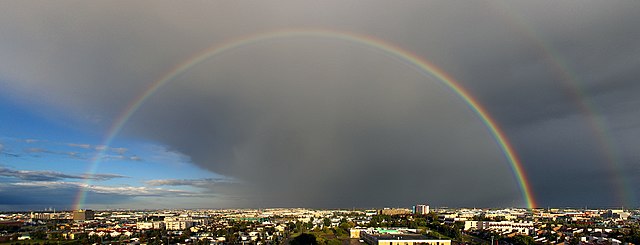
Rainbows: Light, Refraction And A Little Bit Of Magic
“Somewhere over the rainbow, skies are blue, and the dreams that you dare to dream really do come true”. In The Wizard of Oz, as in many works of drama, art, literature and popular culture, the rainbow is depicted as having magical, supernatural qualities. But have you ever wondered how exactly it is that rainbows form, and what else they represent for different cultures?
The Science Of Rainbows
In scientific terms, the rainbow is a meteorological phenomenon that is visible when sunlight and rain combine. Although sunlight seems to our eye to consist purely of white light, it is in fact made up of an array of seven different colours. A rainbow is formed when the light is split, or dispersed, into these component colours. When the sun shines on raindrops, the different colours in the sunlight are bent at different angles, through a process known as refraction. The colours reflect off the back of the raindrops, and we see a stunning rainbow in the sky. (Did you know that a rainbow’s true shape is actually a complete circle? We can only see this though if we view a rainbow from an aeroplane or from the top of a mountain – the rainbow’s characteristic arc shape is due to the land blocking our view of the other half of the circle.)
History And In Culture
Perhaps owing to their sporadic and unpredictable appearance, and to their ability to refresh the sky with dazzling colours during a fierce rainstorm, rainbows have long been the subject of reverence. In Christian culture, the rainbow represents the promise of a brighter future: Noah was sent a rainbow following the Great Flood as a sign and a promise that it was now safe for people to resume their lives without fear of further disaster. And Irish legend promises a pot of gold at the end of the rainbow – hidden there by leprechauns, who stole it from the Vikings. For other cultures, rainbows are considered a bridge between the mortal world and the world of the gods, and are thus admired and worshipped.
More recently, the rainbow has been used as an important symbol in two very specific circumstances. The international gay movement uses a multicoloured rainbow flag as a symbol of pride and of diversity in sexuality. And during the challenging times of the Covid-19 pandemic, images of rainbows were displayed in windows worldwide as a universal sign of gratitude to healthcare workers and of hope for, and belief in, better times to come.